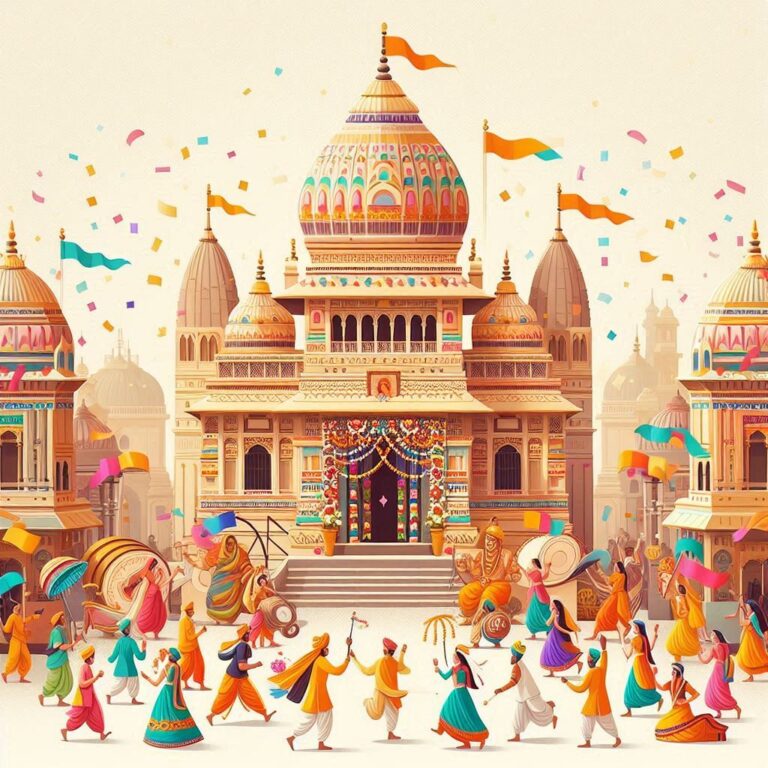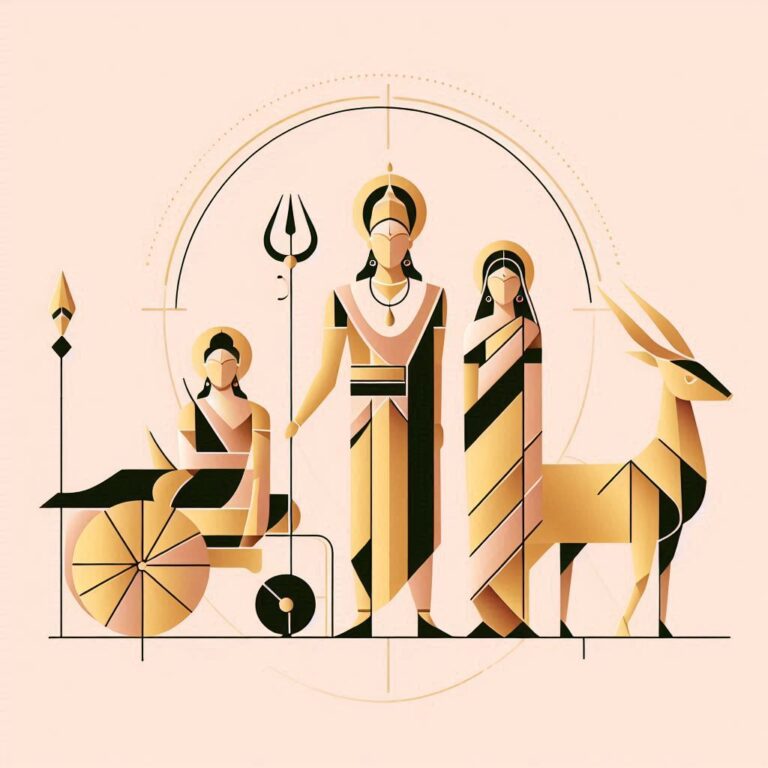Sita’s Abduction: Unraveling the Golden Deer Deception
The Deception of the Golden Deer: Sita’s Abduction
The epic tale of the Ramayana is a treasure trove of lessons, struggles, and divine interventions that continue to resonate even today. One of the most poignant moments in this ancient narrative is the abduction of Sita, which sets off a series of events that shape not just the fate of its characters but also the moral fabric of society. At the heart of this episode lies the crafty deception of the golden deer. Have you ever wondered how something so seemingly innocent could lead to chaos and heartache? Let’s dive deep into the rich layers of this event and uncover its many meanings.
The Characters: A Triumvirate of Fate
Before we tackle the plot, let’s meet the players.
Rama
The prince of Ayodhya, Rama exemplifies dharma (righteous duty). His sense of duty, loyalty, and courage make him a pivotal figure not just in the story but in Indian culture as a whole.
Sita
Rama’s wife and a symbol of virtue, Sita’s abduction is the catalyst for the dramatic events that follow. Her strength and resilience shine forth even in the direst situations.
Ravana
The ten-headed demon king of Lanka plays the antagonist. His obsession with power and beauty ultimately leads to his undoing, making him a brilliant, albeit tragic, villain.
The Context: Why the Golden Deer?
Imagine sitting in your backyard, and a glimmering golden deer pops into view. You’d be intrigued, right? You would not be alone. In the Ramayana, the golden deer is a manifestation of desire and illusion. When Sita sees this enchanting creature, she becomes entranced. But isn’t that just how desire works? It leads us off the beaten path into unknown territory.
The Golden Deer as a Symbol
In spiritual terms, the golden deer represents the fleeting nature of material desires. Just as we chase after dreams and ambitions, we often forget the core of who we are. The allure of the golden deer speaks to our inherent vulnerabilities.
The Plot Unfolds: The Illusion Takes Hold
As the story progresses, the golden deer becomes more than just a visual temptation; it becomes a catalyst for a series of tragic events.
Sita’s Desire
When Sita expresses her longing for the deer, Rama, ever the dutiful husband, sets off to capture it. Here’s a crucial point—Rama prioritizes Sita’s happiness. But what if he had recognized the danger hidden beneath her innocent request?
As he ventures deeper into the forest, he shouts to Sita:
“Stay close, my love, for the forest is fraught with dangers.”
But we all know how it goes. His departure leaves Sita vulnerable, and soon, Ravana seizes this moment.
The Abduction
Ravana, in the guise of a wandering sage, approaches Sita.
“My dear, can you not see? The deer is merely a reflection of your own desires.”
Sita, enamored by the golden deer and deceived by Ravana’s guise, lets her guard down. Before she realizes it, she is taken away to Lanka, and Rama finds himself in a treacherous race against time to save her. Do you see how the threads of fate are woven so tightly?
The Aftermath: A Lesson in Awareness
Once Sita is taken, a storm unfolds. Rama receives help from the mighty Hanuman and the monkey army. Together, they set out to rescue her, symbolizing the importance of friendship and loyalty.
Lessons Learned
- Desire can cloud judgment: Just as Sita was misled by the charm of the deer, we often chase after what seems attractive, neglecting the potential dangers.
- The importance of vigilance: Rama’s absence demonstrated the necessity of being aware of one’s surroundings and potential threats.
Dohas and Shlokas: Wisdom from the Ancients
In the spirit of enriching this narrative, let’s explore some dohas and shlokas that reflect the events of Sita’s abduction and the lessons it imparts.
Paraphrased Doha
दोहा:
“चाहेन बृंदावन, सोते सूरज पक्ष |
जो आते उन्हें तृप्ता, हृदय बिचार नक्ष।”
(Dhūhā: “Those who seek the forest of desires,
Are seldom aware of the heart’s treasures.”)
Phoenetics: “Chahen Brindavan, Sote Suraj Paksh,
Jo Aate Unhein Tripta, Hriday Vichar Naksh.”
Translation: “Those who chase the forest of desires
Are often blind to the riches of their heart.”
Shloka
श्लोक:
“अपि स्वर्णमयी हि सिता, यदि तत्र न यास्यति।
प्राणिर्जीवितुं प्राप्तुं, दुष्कृत्यं हि न यास्यति॥”
(Ślokā: “If Sita was golden in essence,
She would have never succumbed to the wickedness.”)
Phoenetics: “Api Swarnamayi Hi Sita, Yadi Tatra Na Yasyati,
Pranirjeevitun Praptun, Dushkṛtyam Hi Na Yasyati.”
Translation: “If Sita were truly golden,
She would never fall prey to malice.”
Another Perspective
दोहा:
“इसके पीछे यही छाया, जुनून का ताना बाना |
सच्चाई का अंत करना, ये सब बनाता है ज़िन्दगी का ज़ेना।”
(Doha: “Behind it lies a shadow, woven with desires;
To end the truth is to weave the fabric of life.”)
Phoenetics: “Iske Peeche Yahi Chhaya, Junoon Ka Tana Bana,
Sachchai Ka Ant Karna, Ye Sab Banata Hai Zindagi Ka Jena.”
Translation: “Behind it lies a shadow, woven with desires;
To end the truth is to stitch the fabric of life.”
Reflections and Conclusions: More Than a Tale
As we peel back the layers of the story of Sita’s abduction, it becomes evident that this is more than just a narrative of love and loss. This epic serves as a guide to our own lives. Each character, each choice, and every twist of fate emphasizes the importance of mindfulness, the potency of one’s desires, and the critical nature of making wise choices.
Life often presents us with a golden deer—a sparkling temptation that beckons with its allure. But remember, just as Sita fell victim to her desires, so can we if we are not careful. So the next time you find yourself chasing after something shiny, ask yourself: Is it truly what you desire, or is it just an illusion?
In the grand tapestry of the Ramayana, the story of Sita’s abduction teaches us timeless lessons about vigilance, desire, and human nature.
FAQs
-
What does the golden deer symbolize in the Ramayana?
- The golden deer symbolizes fleeting desires and illusions that can distract us from our true paths.
-
How did Sita’s abduction affect Rama’s character?
- Sita’s abduction tests Rama’s virtues, pushing him to show immense courage and resilience while seeking to rescue her.
-
What can we learn from Sita’s experience?
- We can learn the importance of discernment in our desires and the necessity of not succumbing to illusions.
-
Is there a deeper meaning behind Ravana’s character?
- Yes, Ravana represents the darker sides of ambition, power, and the potential consequences of unchecked desires.
-
How does the story of Sita resonate with modern life?
- Sita’s tale reflects our ongoing struggles with desire and choice, reminding us to remain aware of our surroundings and the influences that can lead us astray.
Remember, just like the golden deer danced in front of Sita, temptation lurks in all corners of our lives. Be vigilant and stay true to your heart!







